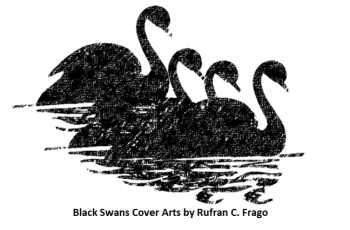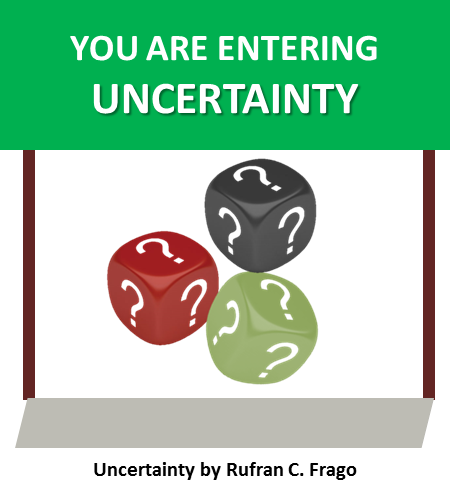Black Swans

Black swan events are so fascinating that they are a common source of discussion in many risk management forums. The variety of perspectives coming from all directions never ceases to amaze. Understanding black swans can help planning and professionals appreciates planning risks, perhaps make a more intelligent forecast.
To a risk manager, 'black swan' phenomena are highly unlikely events that have massive impacts on a business or society on the rare occasions they occur. It means that the event is unexpected, but is of huge consequence (Ferguson, 2014). There is no scientific way at present to predict black swan events reasonably and acceptably.

I tend to question the result of the research, which suggested that by exploiting many types of data, risk managers can help prevent (or at least contain) the damage related to black swan events and other risky blind spots.
How can any data be useful without the process of correlation? Black swan events cannot be accurately quantified or calculated. They are unknown unknowns.The interesting part mentioned in one study points to the use of integrated data to point to potential risk. The mere mention of integrated data underlines correlation; i.e. we have to associate correctly one datum to the next, or one set of information to the others, for them to be of value.
That can prove rather impossible when we have nothing to start with. How do we start working on something we do not know? There is an immense number of data points where one can start. Only by scratching the surface of knowledge that knowing starts.
Unknown unknowns (black swans) might be in the room, for all we know, but we just cannot see them until circumstances make them visible.Once we see that the risk exists, we would surmise that it no longer qualifies as a black swan event, because we are now aware of the risk, and the element of surprise is no longer there. It is now the normal type of risk that you, and many risk managers are already familiar with, the known unknowns.

Bill Pieroni, Chief Operating Officer at insurance giant Marsh, and a few others, contend that the best way to manage risk, even black swans is to use big data.
He explains that some events occur with more and more regularity, suggesting that some seemingly unknowable events are in fact, becoming more or less predictable. He claims that this big data will give way to shades-of-grey swans.
Perhaps he is talking about the transition from being unknown to more or less known. Although it sounds logical, shades of grey will be a doubtful state, a ghost of something that will not present any solid evidence but introduce vagueness to nothingness. It might only serve as a uncertainty generator.

In the present age and time, black swan events can only be addressed by intuition.
Despite being labeled as one of the cognitive biases that underlie human flaws in decision-making, I believe that this is a true statement.
We can all agree that if anyone has the right perspective, understanding, and tools to process universal data, and integrate them into some coherent information, prediction of a black swan event is theoretically possible.
The problem in this concept is that nobody has found a way to make it practically possible.Ergo, contrary to what the author implies, real-world application of Pieroni's ideas is still impossible.The risk universe is immense, yet each component, regardless of how small it might be, can affect the results. If we put a bracket to what data we analyze, then we do not have the whole picture.
If we do not put a bracket of limitation to what we evaluate, then we are analyzing infinity and we will not arrive at an answer. We are talking about a great and expansive risk network that trumps common comprehension.
I imagine that many risk drivers actually lie so far outside the boundaries of what we tend to consider that it is futile to predict a potential outcome.Tracing the cause of a black swan event that has already happened can lead us to the most seemingly insignificant occurrence.
It is easy to posit real life examples of how some insignificant events result in a big events, spawning other effects in never ending fashion. Some of you might even trace a problem to the time when a person was born, arguing that if he had not come into being, things would have turned out differently.
I tell you, the iterations are endless. The good thing is, it is an excellent mental exercise.
Source: Frago, R. (2015).Risk-based Management in the World of Threats and Opportunities: A Project Controls Perspective. ISBN 978-0-9947608-0-7 (Canada). Section 1.7
Rufran C. Frago – Author (19-Oct-16)
Related sites:
- E-Touch Up
- My Oil Pro
- Risk-based Management and Services Inc. Facebook
- E-Touch Up (Facebook)
- Your World, Our Risk Universe: Wordpress
- LinkedIn Professional Website
Related articles authored by Rufran Frago.
- Risk Relativity
- Phantom Schedules
- Man is the Center of the Risk Universe
- Project Schedule Baseline Top 10 Prerequisites
- Setting Critical Path
- Schedule Critical path
- Primer to Good Schedule Integration
- Project Schedule: P50, Anyone?
- Schedule Baseline Dilemma Part 1
- Schedule Baseline Dilemma Part 2
- 4D Scheduling Part 1: What is it about?
- 4D Scheduling Part 2
- 4D Scheduling Part 3
- Mega-Projects Schedule Management and Integration
- Scaffolding Hours: What are they? Part 1
- Scaffolding Hours: What are they? Part 2
- Your World, Our Risk Universe
- Rufran Frago in the Global Risk Community Site
 Printer-friendly version
Printer-friendly version- Login or register to post comments
 Send to friend
Send to friend




